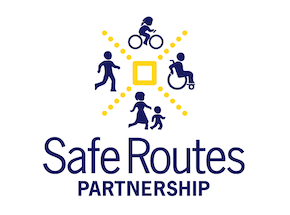Resource Library
This article by building design and construction design includes successful examples of joint use in Santa Ana, CA; Canton, OH and Wheaton, Ill.
Although from a societal point of view a modal shift from car to bicycle may have beneficial health effects due to decreased air pollution, decreased greenhouse gas emissions, and increased levels of physical activity, shifts in individual adverse health effects such as higher exposure to air pollution and risk of a traffic accident may prevail.
In summary, public schools in most states are subject to liability in some situations that could arise out of the recreational use of school facilities.
This joint use agreement chronicles the agreement between the City of Homer and Kenai Peninsula Borough School District.
This resource is geared toward California communities who may need assistance with talking points for joint use.
Commuters are exposed to high concentrations of air pollutants, but little quantitative information is currently available on differences in exposure between different modes of transport, routes, and fuel types.
This study examines whether childhood obesity affects student achievement and whether these effects differ by family income level.
This study examines the associations between sports team participation, physical activity, and academic outcomes in middle and high school students.
This is a study of the effects of a school-based obesity prevention interventions that included dietary, curricula, and physical activity components on body mass index (BMI) percentiles and academic performance among low-income elementary school children.
This report is a literature review that examines the existing research on the relationship between school-based physical activity, including physical education, and academic performance. It spans 23 years of research and includes 50 studies.
School facilities and grounds are integral components of public infrastructure that provide students with space to learn, socialize, and exercise.
This study examines the impact of integrating physical activity with elementary curricula on fluid intelligence and academic achievement.
This study is the first to explore the association between childhood aerobic fitness and basal ganglia structure and function.
This is is a study of how successfully addressing childhood onset obesity requires multilevel (individual, community, and governmental), multi-agency collaboration.
This study tested whether PA would be associated with greater gray matter volume after a 9-year follow-up, a threshold could be identified for the amount of walking necessary to spare gray matter volume, and greater gray matter volume associated with PA would be associated with a reduced risk for cognitive impairment 13 years after the PA evaluation.
The study’s objective was to investigate whether aerobic fitness and obesity in school children are associated with standardized test performance.
The goal was to analyze the physical fitness, self-concept, attitudes toward physical education, and academic achievement of Turkish elementary school children by socioeconomic status.
This study examined the associations between indicators of health-related physical fitness (cardiovascular fitness and body mass index) and academic performance (Texas Assessment of Knowledge and Skills).
Academic achievement based on the idea that health and physical fitness have an impact on the ability to achieve academically. Because of the recent pressures of No Child Left Behind, many schools have opted to limit the amount of time students spend in physical education classes and recess.
In many communities, where safe places to play are few and far between, schools offer a variety of recreational facilities – from gymnasiums and running tracks to sports fields and playgrounds – to meet residents’ needs.

